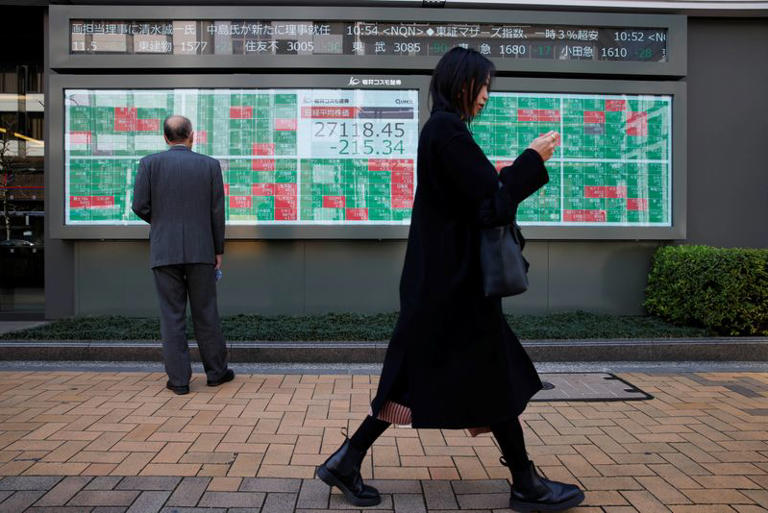On Wednesday, Japanese stocks surged while Chinese stocks experienced a slight dip, reflecting a mixed sentiment across the Asia-Pacific region amidst a holiday-shortened week. The Nikkei in Japan gained 0.93%, edging closer to its recent all-time high, buoyed by a weakening yen that approached the 152-per-dollar mark. This decline in the yen, despite the Bank of Japan’s recent interest rate hike, prompted discussions about potential central bank intervention.
However, sentiment in mainland China and Hong Kong was more subdued, with both the Hang Seng and Chinese blue chips slipping approximately 0.4%, reversing gains from the previous session. Overall, MSCI’s broadest index of Asia-Pacific shares saw a modest 0.11% increase, although this figure shifted to a 0.22% decline when excluding Japanese shares.
Analysts attribute the choppy and directionless trading to various factors, including rebalancing flows impacting the market and anticipation of key events later in the week. Friday will see the release of the U.S. Federal Reserve’s favored inflation indicator, along with public comments from Fed Chair Jerome Powell, coinciding with a holiday when most markets are closed. Traders are closely monitoring these developments, particularly given the recent unpredictability in inflation data and its potential impact on the Fed’s policy stance.
In currency markets, the U.S. dollar index, which measures the currency against six major peers, including the yen, showed slight gains. The euro and sterling both experienced minor declines against the dollar. Traders are also monitoring central bank policy decisions, with Sweden’s Riksbank expected to hold policy steady, but hints for a potential rate cut later in the year are being watched closely.
U.S. long-term Treasury note yields remained stable, while gold eased slightly as it continued to search for stability following recent record highs. Bitcoin, the leading cryptocurrency, saw a modest increase in value.
In the commodity markets, crude oil prices fell for a second consecutive day, pressured by reports of a surge in crude stockpiles in the U.S. and indications that major oil producers are unlikely to alter their output policy at an upcoming technical meeting. Brent crude futures for May declined to $85.56 a barrel, while U.S. West Texas Intermediate (WTI) crude futures for May delivery fell to $81.07 a barrel.
